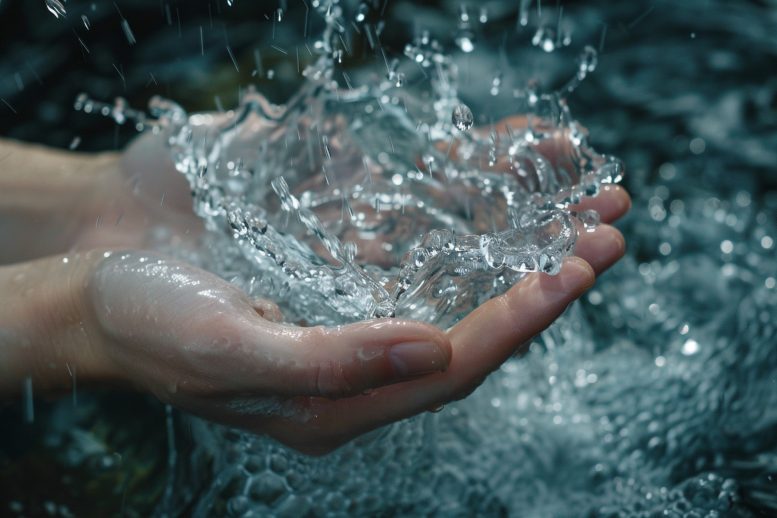
Human activities have pushed the Earth’s freshwater cycle beyond its natural state, with significant alterations observed since the mid-twentieth century due to pressures like damming, irrigation, and climate change. This underscores the critical need for immediate action to safeguard vital freshwater resources.
New research indicates that the worldwide freshwater cycle has undergone significant changes, moving well away from the conditions observed prior to industrialization.
A recent study examining global freshwater resources reveals that human actions have significantly altered the planet’s freshwater cycle, causing variations that far exceed the conditions prior to industrialization. The study shows that the updated planetary boundary for freshwater change was surpassed by the mid-twentieth century. In other words, for the past century, humans have been pushing the Earth’s freshwater system far beyond the stable conditions that prevailed before industrialization.
This is the first time that global water cycle change has been assessed over such a long timescale with an appropriate reference baseline. The findings, published in Nature Water, show that human pressures, such as dam construction, large-scale irrigation and global warming, have altered freshwater resources to such an extent that their capacity to regulate vital ecological and climatic processes is at risk.
Analyzing Human Impact
The international research team calculated monthly streamflow and soil moisture at a spatial resolution of roughly 50×50 kilometers using data from hydrological models that combine all major human impacts on the freshwater cycle. As a baseline, they determined the conditions during the pre-industrial period (1661-1860). They then compared the industrial period (1861-2005) against this baseline.
Their analysis revealed an increase in the frequency of exceptionally dry or wet conditions –deviations in streamflow and soil moisture. Dry and wet deviations have consistently occurred over substantially larger areas since the early 20th century than during the pre-industrial period. Overall, the global land area experiencing deviations has nearly doubled compared with pre-industrial conditions.
‘We found that exceptional conditions are now much more frequent and widespread than before, clearly demonstrating how human actions have changed the state of the global freshwater cycle,’ says Vili Virkki, a doctoral researcher at Aalto University and one of the lead authors of the paper.
Geographical Differences in Water Cycle Changes
Because the analysis was done at a high spatial and temporal resolution, the researchers could explore geographical differences in the deviations. Exceptionally dry streamflow and soil moisture conditions became more frequent in many tropical and subtropical regions, while many boreal and temperate regions saw an increase in exceptionally wet conditions, especially in terms of soil moisture. These patterns match changes seen in water availability due to climate change.
There were more complex patterns in many regions with a long history of human land use and agriculture. For example, the Nile, Indus, and Mississippi river basins have experienced exceptionally dry streamflow and wet soil moisture conditions, indicating changes driven by irrigation.
‘Using a method that’s consistent and comparable across hydrological variables and geographical scales is crucial for understanding the biophysical processes and human actions that drive the changes we’re seeing in freshwater,’ explains Miina Porkka, who co-led the study at Aalto before moving to the University of Eastern Finland.
With this comprehensive view of the changes in streamflow and soil moisture, researchers are better equipped to investigate the causes and consequences of the changes in the freshwater cycle. ‘Understanding these dynamics in greater detail could help guide policies to mitigate the resulting harm – but our immediate priority should be to decrease human-driven pressures on freshwater systems, which are vital to life on Earth,’ says Aalto’s Associate Professor Matti Kummu, senior author of the study.
Reference: “Notable shifts beyond pre-industrial streamflow and soil moisture conditions transgress the planetary boundary for freshwater change” by Miina Porkka, Vili Virkki, Lan Wang-Erlandsson, Dieter Gerten, Tom Gleeson, Chinchu Mohan, Ingo Fetzer, Fernando Jaramillo, Arie Staal, Sofie te Wierik, Arne Tobian, Ruud van der Ent, Petra Döll, Martina Flörke, Simon N. Gosling, Naota Hanasaki, Yusuke Satoh, Hannes Müller Schmied, Niko Wanders, James S. Famiglietti, Johan Rockström and Matti Kummu, 4 March 2024, Nature Water.
DOI: 10.1038/s44221-024-00208-7









Be the first to comment on "A Blueprint for Disaster: Humans Have Pushed Earth’s Freshwater Cycle to Breaking Point"